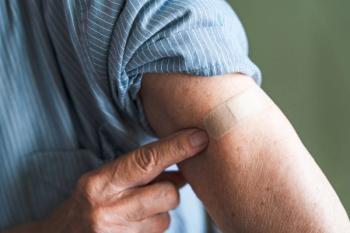
Protecting Pharmacists: The PPE Every COVID-19 Vaccinator Needs Now
Are we doing enough to protect those on the front lines?
As a retired pharmacist, educator, and Captain in the US Public Health Service, I have dedicated my professional life to pharmacy with an emphasis on immunization. I have trained thousands of pharmacists as immunizers. and through my work with student pharmacists, I have facilitated the vaccination of many more. I share this background because Operation Warp Speed is far and away the largest mass vaccination program ever attempted in the United States. It is estimated that the federal government will distribute 300 million doses of the COVID-19 vaccine to states, with thousands of pharmacists, nurses, technicians and other health care professionals (HCPs) recruited locally to administer the vaccine. Most of the initial doses will be distributed to health systems and health departments at the state level, each with its own rules, requirements and infrastructure.
But are we doing enough to protect those on the front lines of this unprecedented event? Have we thought of everything to keep immunizers safe?
In our current COVID-era, when we think about personal protective equipment (PPE) we’re primarily thinking about protection against the airborne transmission of the coronavirus. We must look at the whole picture. During non-COVID times, it is estimated that HCPs experience up to 800,000 potentially infectious exposures to blood through needlesticks and splashes.1,2 This number will, undoubtedly, increase due to the high numbers of vaccinations administered quickly and in a wide range of traditional and nontraditional settings.
Exposure to blood can spread infectious bloodborne pathogens, most notably hepatitis B, hepatitis C, and HIV. Of these 3, only hepatitis B is vaccine preventable and the CDC recommends hepatitis B vaccination for all health care providers. However, time is of the essence. As hospitals and pharmacies staff up quickly, it is imperative to ensure immunizers and support staff are protected. It’s also the law. The Occupational Safety and Health Administration’s Bloodborne Pathogens Standard requires that employers provide yearly training on prevention of needlesticks and bloodborne pathogens, including hepatitis B, and offer the hepatitis B vaccination series to any employee who is reasonably anticipated to have exposure to blood or other potentially infectious materials.3 Multiple hepatitis B vaccine options are available and recent innovations have made it possible to provide rapid protection against hepatitis B. Given the current risks on the front lines, we need to protect these workers with everything we can, right now, as quickly as possible.
In these unimaginable times, it makes sense to utilize every option available to keep our health care workforce safe and healthy from COVID-19 and other bloodborne pathogens. As we all know, hepatitis B is prevalent, infectious, and deadly. By working together, we can help protect our protectors against hepatitis B. For more information about implementing an effective hepatitis B protection program, visit the Hepatitis B Foundation at https://
References
1. American Nurses Association. American Nurses Association’s Needle Stick Prevention Guide. American Nurses Association; 2002. Accessed July 18, 2018. http://www.who.int/occupational_health/activities/2need guid.pdf.
2. Updated U.S. Public Health Service guidelines for the management of occupational exposures to HIV and recommendations for postexposure prophylaxis. MMWR Recomm Rep. 2005;54(RR-9):1-17.
3. OSHA Bloodborne Pathogens standard, 29 CFR 1910.1030, https://www.osha.gov/laws-regs/regulations/standardnumber/1910/1910.1030
Newsletter
Pharmacy practice is always changing. Stay ahead of the curve with the Drug Topics newsletter and get the latest drug information, industry trends, and patient care tips.

















































































































